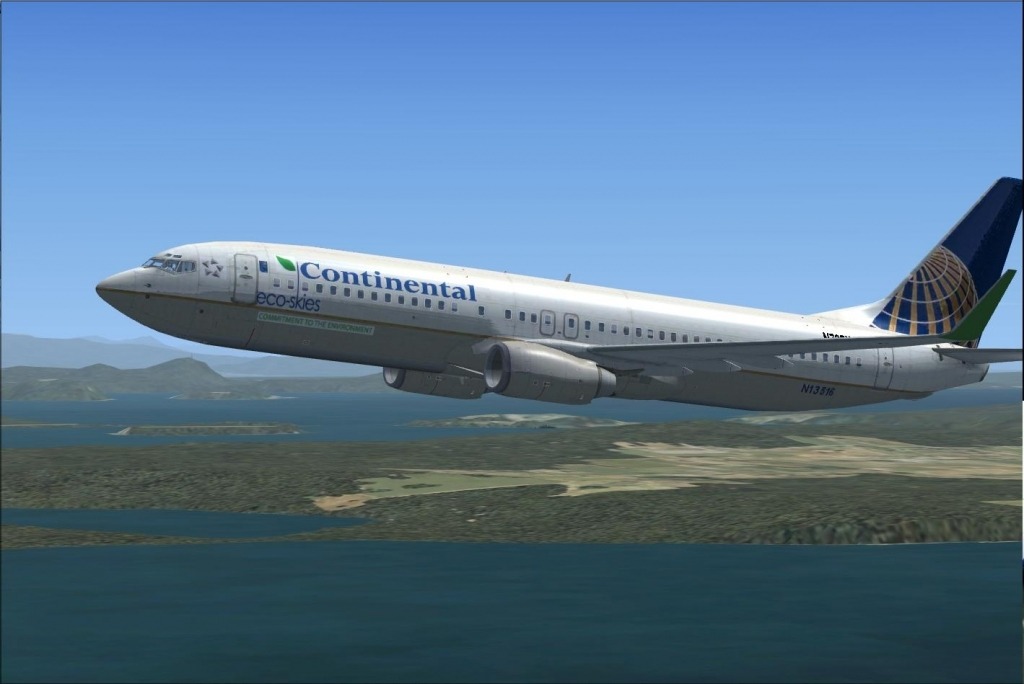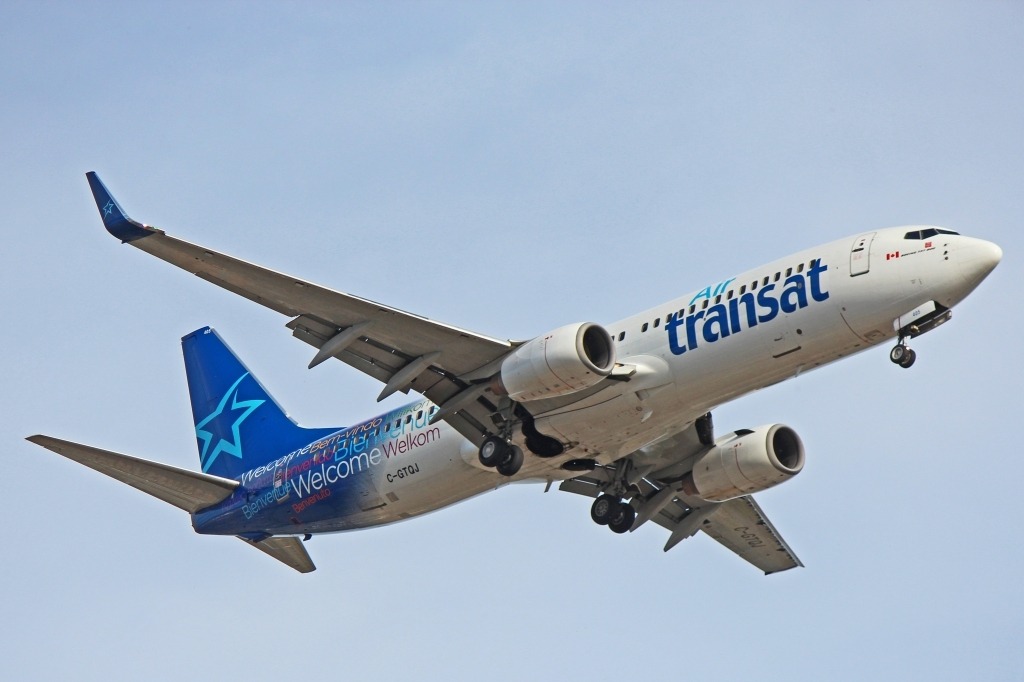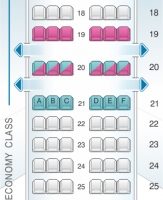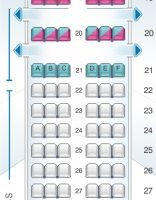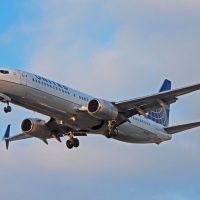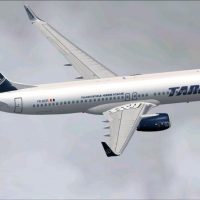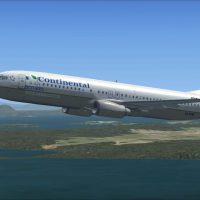The Boeing 737-800 Seat map and Seating Chart Information. The first cabin version of Boeing 737-800 is used by United Airlines during the flights within North America and is the most common.
This airplane has 152 seats.
Class consists of 5 rows of seats that have 2-2 configuration. The seats of the 1st row have less space for passengers’ legs because of the position of the bulkhead.
The seats of the 5th row are less reclining because of the wall located behind. Proximity of the lavatory may be bothersome.
Economy class may transport 132 passengers.
The seats of the rows 7-14 are reserved for OnePass Elite members and become available for other passengers within 24 hours prior the flight.
The seats of the 7th row as well as the seats 8ABC are narrower than standard as the tray tables are built-in the armrests. Also these seats have no floor storage during take-off and landing. Proximity of the lavatories may cause inconvenience to passengers of the seats 7D and 8C.
The seats 10A, 11A and 11F have no windows.
The seats of the 14th row are less reclining as behind them exit row is located.
As the seats of the 20th row are located between two exit rows they have extra legroom but at the same time are less reclining. These seats are narrower and less padded than other standard seats. The seats of these row are designated Extra Legroom Seats and may be reserved by any passenger within 24 hours prior the flight for an additional charge. Platinum and Gold-Elite members may reserve these seats at any time. One Pass Elite members may choose these seats with no additional fee.
The seats of the 21st row are considered good seats as passengers of these seats will feel comfortable thanks to the extra space for their legs. As the tray tables are in the armrests the width of these seats is slightly reduced.
The seats of the last 3 rows, i.e. rows 35-37 have reduced width. The seats 35C and 35D have movable armrests.
Second cabin version of the Boeing 737-800 (738) V2
The second version of Boeing 737-800 is also used by United Airlines within North American countries.
This cabin version features 160 seats.
First class may transport 16 passengers in 4 rows. The seats here have 2-2 configuration and have 7.5 degree recline. All these seats are standard, only the seats of the first row have some peculiarities. So, the seats of the first row have less legroom because of the bulkhead position. As the tray tables are in the armrests the width of these seats is slightly reduced. These seats have no floor storage during take-off and landing.
The Economy class includes 24 rows of seats per 6 seats in each.
The seats of the 7th row are standard but with some disadvantages such as: reduced width of the seats as they tray tables are built-in the armrests making them immovable and lack of floor storage during take-off and landing.
The seat 11A is missing a window.
As behind the seats of the 15th row exit row is located these seats are less reclining or not reclining at all.
Due to the fact that the seats of the 20th row are located between to exit rows these seats have both advantage, such as extra space for passengers’ legs, and such a disadvantage as limited or no recline.
The seats of the seats of 21st row are considered the best seats as they have extra legroom. However, the width of these seats is reduced a little as the tray tables are in the armrests making them immovable.
Passengers of the seats of the rows 35-37 will feel discomfort because of the close location of the lavatories. Also due to the curvature of the airplane’s tail the width of these seats is reduced a little. In addition the seats of the 37th row have limited recline and considering all these disadvantages these seats are considered bad seats.
Third cabin version of the Boeing 737-800 (738) V3 Economy Plus
The third version of Boeing 737-800 has 154 seats divided into three classes.
The seats 1A and 1B have extra legroom thanks to the cutout in the bulkhead. These seats have no footrests that other seats of the first class have.
The other two seats of the 1st row, i.e. the seats 1E and 1F on the contrary have less space for passengers’ legs because of the bulkhead position. Other disadvantages are the same: lack of footrests, lack of floor storage during take-off and landing and reduced width of the seats.
Economy Plus class consists of 8 rows of seats that have 3-3 configuration.
The first row of the Economy Plus class, i.e. the seats of the 7th row are considered good seats as passengers of these seats will take advantage of extra legroom. But as the tray tables are built-in the armrests making them immovable, the width of these seats is slightly reduced.
The seats 10A and 10F are standard but have misaligned windows. But the seats 11A, 11 F and 12A, 12F have no windows at all.
The seats of the 15th row are not reclining as behind them is located exit row.
Passengers of the seats of 20th row will take advantage of extra space for their legs due to the exit row located in front but at the same time they have limited or no recline due to another exit row located behind.
The seats 21A and 21F have extra space for passengers’ legs thanks to the exit row in front. However, these seats are not reclining. Also window-side armrests are smaller than standard and are built-in the exit door. The seat cushion of these seats is also thinner.
The best seats on the airplane are considered the seats 21BC and 21DE as these seats have extra legroom and no disadvantages.
Economy class includes 15 rows of seats per 6 in each. In some versions of Boeing 737-800 the seats of the 23rd row have restricted overhead storage as entertainment equipment is stored there. When this equipment is used it makes noise that may disturb passengers of these seats.
Because of the curvature of the airplane’s tail the seats of the rows 35-37 have reduced width. Close location of the lavatories and galleys may also represent a problem for passengers of these seats.
The overhead bins of the seats of 35ABC and 36ABC are used for emergency equipment and crew luggage. The seats 35CD and 36CD have movable armrests.
The seats of the last 37th row have limited recline and that is why these seats are considered bad seats.
Fourth cabin version of the Boeing 737-800 (738) V4 Micronesia
The fourth version of Boeing 737-800 may transport 155 passengers.
This version of aircraft makes part of United Airline’s Micronesian sub fleet.
First class consists of 14 seats. The seats 1EF are narrower than standard as the tray tables are in the armrests making them immovable. There is no floor storage for these seats during take-off and landing.
Passengers of the seats 2AB will take advantage of extra space for their legs. These seats have no floor storage during takeoff and landing and their width is slightly reduced.
Economy class has 24 rows of seats, all of them, except the last row, have 3-3 configuration. The seats of the 7th row have the same disadvantages as the seats of the first row, i.e.: reduced width of the seats and lack of floor storage during take-off and landing.
Because of the exit row located behind, the seats of the 15th row are less reclining.
Location of the seats of 20th row between two exit rows provides these seats with extra legroom, but on the other hand these seats are less or not reclining at all.
The best seats on this airplane are the seats of the 21st row. Passengers of these seats will feel comfortable thanks to the extra legroom.
Proximity of the lavatories and galleys may represent a problem for passengers of the seats 35C, 36ABCD and of the 37th row.
As the seats 36ABC and 37DEF are located in the last rows of the aircraft they may have limited or no recline.
Fifth cabin version of the Boeing 737-800 (738) V5
The fifth version of Boeing 737-800 is used by United Airlines for flights within North America.
This cabin version features 3 classes of seats: first, economy plus and economy.
Class includes 4 rows of seats that have 2-2 configuration. All these seats are standard only the seats of the 1st row have such a disadvantage as close location of the galley and lavatories.
Economy Plus class consists of 9 rows of seats per 6 in each. Only the seats of the 15th row and of the rows 20-21st have some peculiarities.
The seats of the 15th row may have limited recline as behind them exit row is located.
The seats of the 20th row have extra space doe passengers’ legs thanks to the exit row located in front and limited recline due to another exit row located behind. Also, these seats have no floor storage during take-off and landing.
Passengers of the seats of 21st row will take advantage of extra legroom provided by exit row located in front. These seats are considered the best seats.
There are 16 rows of seats in the Economy class making totally of 96 seats.
Close location of the lavatories and galley may be bothersome for passengers of the seats 37C, 37D and of the seats of 38th row.
Sixth cabin version of the Boeing 737-800 (738) V6
The sixth cabin version includes 166 seats. These seats are located in three classes.
16 seats are located in the first class. The main disadvantage of the seats of the first class is proximity of the lavatory and galleys.
Economy Plus class consists of 9 rows of seats that have 3-3 configuration. The seats 11A and 11F have misaligned windows.
The seats of the 15th row have limited recline due to the exit row located behind.
The seats of the 20th row have extra space for passengers’ legs but are less reclining than other standard seats of the airplane because this row is located between two emergency exits. Also, these seats have no floor storage during take-off and landing.
The best seats on this airplane are seats of the 21st row. Passengers of these seats will take advantage of extra legroom. There is no floor storage for these seats during take-off and landing.
Close location of the lavatories may cause inconvenience to passengers of the seats 37C and 37D and of the seats of the last 38th row as other passengers tend to gather in this area in order to visit lavatories.

